| |
Rogers Awarded 2007 Pritzker Prize
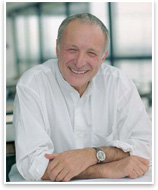 Summary: Richard Rogers, known best for his bold and expressionistic architecture that includes the Centre Pompidou in Paris, the Lloyd’s of London Headquarters building, and the Millennium Dome in London, was named the 2007 Laureate of the Pritzker Architecture Prize on March 29. His firm, the Richard Rogers Partnership, has offices in London, Barcelona, Madrid, and Tokyo. In addition to its iconic design, the firm is highly regarded for its urban planning projects around the globe, notably in London, Lisbon, Berlin, New York, and Seoul. Summary: Richard Rogers, known best for his bold and expressionistic architecture that includes the Centre Pompidou in Paris, the Lloyd’s of London Headquarters building, and the Millennium Dome in London, was named the 2007 Laureate of the Pritzker Architecture Prize on March 29. His firm, the Richard Rogers Partnership, has offices in London, Barcelona, Madrid, and Tokyo. In addition to its iconic design, the firm is highly regarded for its urban planning projects around the globe, notably in London, Lisbon, Berlin, New York, and Seoul.
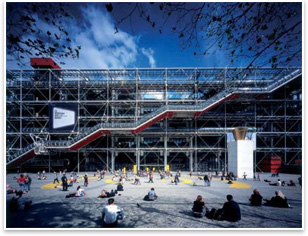 “We know that architecture is a discipline of enormous political and social consequence. And today we celebrate Richard Rogers, a humanist, who reminds us that architecture is the most social of arts. Throughout his long, innovative career, Rogers shows us that perhaps the architect’s most lasting role is that of a good citizen of the world,” stated the jury. “Rogers’ buildings span numerous types, scales, and continents. All of his projects, however, are united by a formal rigor as well as a commitment to the user.” “We know that architecture is a discipline of enormous political and social consequence. And today we celebrate Richard Rogers, a humanist, who reminds us that architecture is the most social of arts. Throughout his long, innovative career, Rogers shows us that perhaps the architect’s most lasting role is that of a good citizen of the world,” stated the jury. “Rogers’ buildings span numerous types, scales, and continents. All of his projects, however, are united by a formal rigor as well as a commitment to the user.”
Building a career
Rogers, born in Florence in 1933, was graduated from the Architectural Association in London and earned an MArch from Yale on a Fulbright Scholarship. The head of the Yale school of architecture at the time was Paul Rudolph, and one of Richard’s fellow students was Norman Foster. The late James Stirling was also one of his teachers. It was at Yale that Rogers developed an interest in the works of Frank Lloyd Wright. After graduating, Rogers worked at Skidmore, Owings & Merrill before returning to England, where Foster and Rogers—with Rogers’ first wife, Su, and Wendy Cheeseman—formed Team 4 as their first architecture practice. In 1967, Team 4 broke up and Rogers and Foster each formed their own firms.
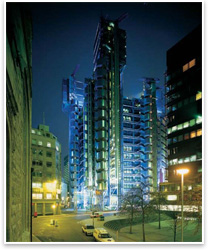 In 1971, Rogers and Renzo Piano joined forces to become Piano + Rogers, the firm that won the commission to design Centre Pompidou in Paris. The project, which brought international attention and admiration to the architects, took six years to complete. In 1978, Rogers and Piano separated, and Rogers founded his extant firm, Richard Rogers Partnership, whose inaugural commission was the Lloyd’s of London headquarters. In 1971, Rogers and Renzo Piano joined forces to become Piano + Rogers, the firm that won the commission to design Centre Pompidou in Paris. The project, which brought international attention and admiration to the architects, took six years to complete. In 1978, Rogers and Piano separated, and Rogers founded his extant firm, Richard Rogers Partnership, whose inaugural commission was the Lloyd’s of London headquarters.
Global concern; global appeal
Rogers, from his Team 4 years, has been recognized for addressing the large context, from urban design concerns to global sustainability. In 1995, Rogers was the first architect ever invited to give the BBC Reith Lectures—a series titled “Cities for a Small Planet.” “Human life has always depended on the three variables of population, resources, and environment,” he said in his lectures. “But today, we’re perhaps the first generation to face the simultaneous impact of expanding populations, depletion of resources, and erosion of the environment. All this is common knowledge, and yet, incredibly, industrial expansion carries on regardless.”
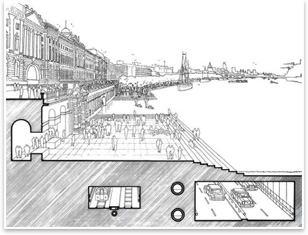 Rogers’ practice also has a global base: In addition to London, Richard Rogers Partnership (which will be renamed Rogers Stirk Harbour + Partners in the UK next month) has offices in Barcelona, Madrid, and Tokyo. Some of his major projects, which span the globe, include: in New York, the design for a 71-story tower for the World Trade Center site at 175 Greenwich Street, and in Washington, D.C., an office building under construction at 300 New Jersey Avenue. In the UK, Rogers’ work includes the Leadenhall Building; the Millennium Experience; an early project, Wimbledon House, a home for Rogers’ parents in the late 1960s; and the National Assembly for Wales in Cardiff. His Terminal 4, Barajas Airport in Madrid has won much critical acclaim, including the 2006 Stirling Prize. In Asia, the firm has worked on the Nippon Television Headquarters in Tokyo as well as several other projects there and in South Korea. Rogers’ practice also has a global base: In addition to London, Richard Rogers Partnership (which will be renamed Rogers Stirk Harbour + Partners in the UK next month) has offices in Barcelona, Madrid, and Tokyo. Some of his major projects, which span the globe, include: in New York, the design for a 71-story tower for the World Trade Center site at 175 Greenwich Street, and in Washington, D.C., an office building under construction at 300 New Jersey Avenue. In the UK, Rogers’ work includes the Leadenhall Building; the Millennium Experience; an early project, Wimbledon House, a home for Rogers’ parents in the late 1960s; and the National Assembly for Wales in Cardiff. His Terminal 4, Barajas Airport in Madrid has won much critical acclaim, including the 2006 Stirling Prize. In Asia, the firm has worked on the Nippon Television Headquarters in Tokyo as well as several other projects there and in South Korea.
Humanitarian and citizen architect
Active politically, Rogers serves as an adviser to Prime Minister Tony Blair's government, chairs a committee that has studied England’s cities, and sits on two oversight design committees for London’s hosting of the 2012 Olympics. Rogers was knighted in 1991 and five years later made a Labor life peer, taking the title, The Lord Rogers of Riverside. He also serves as an advisor to the mayor of London and the mayor of Barcelona.
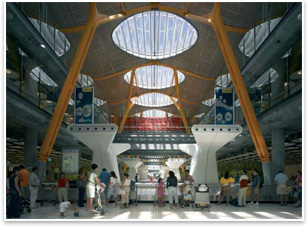 Rogers also is known for his humanitarian approach to life as well as to architecture. For instance, he is president of the National Communities Resource Center, a trustee of the UK Board of Médecins du Monde, and a patron of the Society of Black Architects. He is active in the art world and since 1984 has served as a member, United Nations World Commission on 21st Century Urbanization. The Washington Post on March 29 reported that Roger’s firm “donates almost a fifth of its annual profit to charity, and salaries are structured such that the highest paid architect earns only six times the salary of the lowest paid. Rogers said he would turn the $100,000 prize money over to the firm, and he expected they would decide to give it to charity.” Rogers also is known for his humanitarian approach to life as well as to architecture. For instance, he is president of the National Communities Resource Center, a trustee of the UK Board of Médecins du Monde, and a patron of the Society of Black Architects. He is active in the art world and since 1984 has served as a member, United Nations World Commission on 21st Century Urbanization. The Washington Post on March 29 reported that Roger’s firm “donates almost a fifth of its annual profit to charity, and salaries are structured such that the highest paid architect earns only six times the salary of the lowest paid. Rogers said he would turn the $100,000 prize money over to the firm, and he expected they would decide to give it to charity.”
Rogers’ accolades are as global and prestigious in scope as his building are and include:
- Golden Lion for Lifetime Achievement, from the La Biennale di Venezia, for the 10th International Architecture Exhibition (2006)
- Praemium Imperiale, a global arts prize awarded annually by the Japan Art Association (2000)
- Thomas Jefferson Memorial Foundation Medal, awarded by the University of Virginia to recognize outstanding achievement in design or distinguished contributions in the field of architecture (1999)
- Life Baron of the United Kingdom (1996)
- Knighthood (1991)
- Arnold W. Brunner Memorial Prize from the American Academy & Institute of Arts and Letters (1989)
- Chevalier, l’Ordre National de la Legion de Honneur (1986)
- Royal Gold Medal for Architecture (1985).
Rogers also has been awarded honorary degrees from 10 universities.
 The prize The prize
The formal presentation ceremony will take place June 4 in London at Inigo Jones’ 1619 Banqueting House, at which Rogers will receive a bronze medallion and a $100,000 grant. The Pritzker Architecture Prize was established by the Hyatt Foundation in 1979 to honor annually a living architect whose built work demonstrates a combination of those qualities of talent, vision, and commitment that has produced consistent and significant contributions to humanity and the built environment through the art of architecture. The prize takes its name from the Pritzker family, whose international business interests are headquartered in Chicago.
Past Pritzker Prize recipients include Philip Johnson; Frank Gehry, FAIA; Rafael Moneo, Hon. FAIA; Kevin Roche, FAIA; Richard Meier, FAIA, Thom Mayne, FAIA; and Renzo Piano, Hon. FAIA. Rogers is the fourth British architect to receive the prestigious award. He is preceded in this honor by James Stirling (1981), Sir Norman Foster (1999), and Zaha Hadid (2004).
—SS |
|


 Summary:
Summary:



